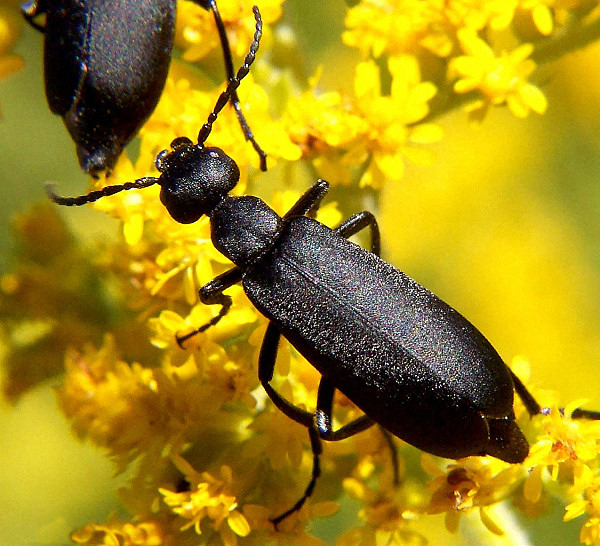
Author: @madridbg, via Power Point 2010, using public domain images. OpenClipart-Vectors
Greetings and welcome to another installment related to the wonderful natural world, the following publication is intended to publicize a new defense system that has been exhibiting the species of beetle Meloidae, which allows to endure in the harsh and arduous scenario of nature.
In this sense, the Meloidae family extends over 2500 species worldwide, their potent toxins have made them famous as they are capable of producing skin rashes and a large infection in the affected areas as a result of the release of catharidin venom.
In addition to the aforementioned clinical complications, when it comes into contact orally, it causes irritations at the moment of urination and generates involuntary erections, hence this substance was considered by our ancestors as an aphrodisiac. However, the reality is different and the complications generated are attributed to the inhibition of protein phosphatases in categories 1 and 2.

Fig. 2. Representation of Cantharidin molecule. Author: Manuel Almagro Rivas
This species of Coleoptera has the particularity of undergoing hypermetamorphosis, i.e. a process of larval transformation more complex than other known insects, so that during the time in larval form they tend to generate serious economic damage as they attack the stored silage and generate diseases in livestock, which is why they are considered as kleptoparasites.
So a recent study published in the journal The Science of Nature, reveals a new defense mechanism that the species has developed, the same have learned to simulate a self-bleeding by releasing hemolymph, understood as that colorless substance present in the internal part of invertebrates, which is free of oxygen and loaded with nutrients.

Fig. 3. The species has been able to adapt to new scenarios and has developed several defense mechanisms.. Author: Bruce Marlin
In the study, the researchers revealed the strategic arsenal that the species has developed, including various forms of persuasion ranging from playing dead to the release of highly toxic chemicals, as well as attacks in the form of ambushes. According to the published results, it can be observed that in stressful situations the species implements the hemolymph technique as a measure to preserve its life.
In this sense, we can determine that the different species of our planet have learned new defense and adaptation mechanisms that allow them to cope with the constant changes of your planet, in the first instance by natural selection and in others by deterioration caused by the hand of man, in one way or another, this type of attitude is surprising which drives life on the planet.
BIBLIOGRAPHY CONSULTED

[1] Miguel Ángel Alonso-Zarazaga.. Class Insecta, Order Coleoptera. Journal. IDE@ - SEA, nº 55 (30-06-2015): 1-18. ISSN 2386-7183 2. Ibero Diversidad Entomológica. Article: Online Access
[2] The Meloids (Coleoptera: Meloidae).. pp. 24-59, 2 lams. In: Ruano, F., Tierno de Figueroa, M. & Tinaut, A. (Eds.). The Insects of Sierra Nevada. 200 years of history. Article: Online Access
OF INTEREST

•

The rewards earned on this comment will go directly to the person sharing the post on Twitter as long as they are registered with @poshtoken.